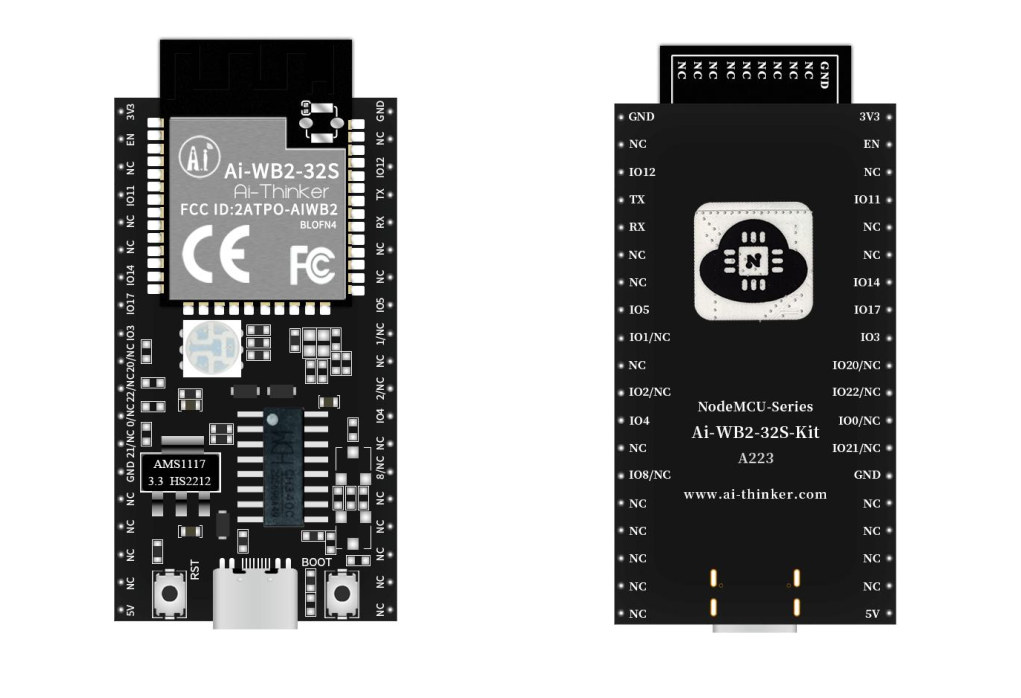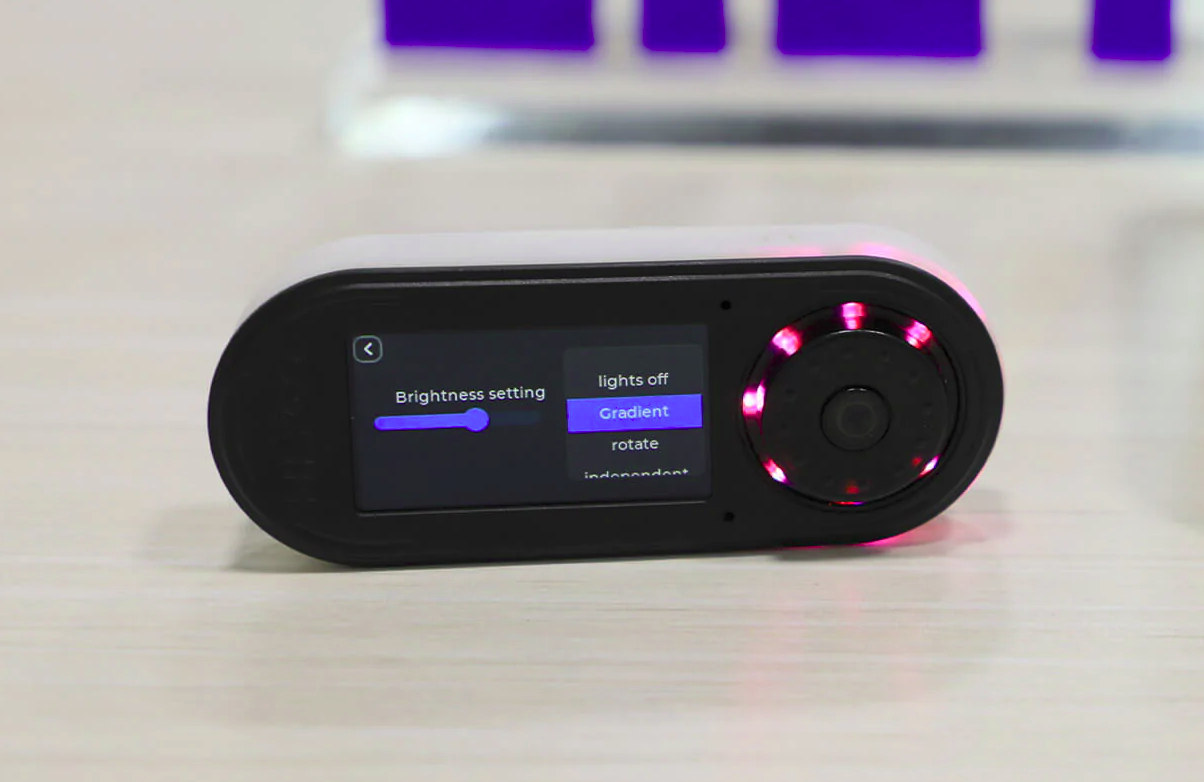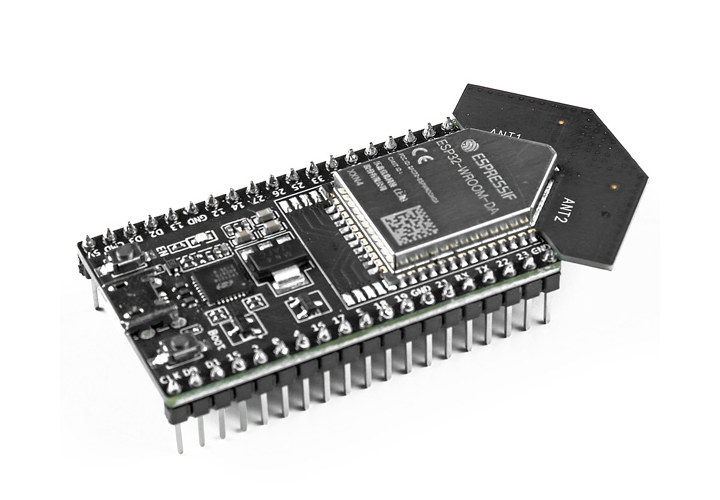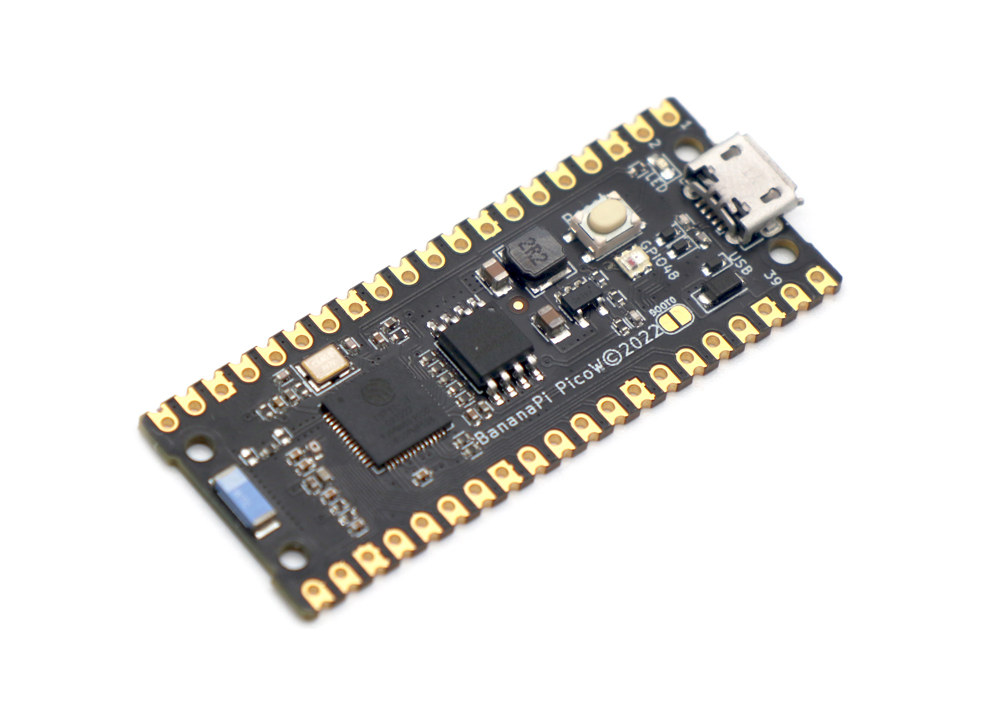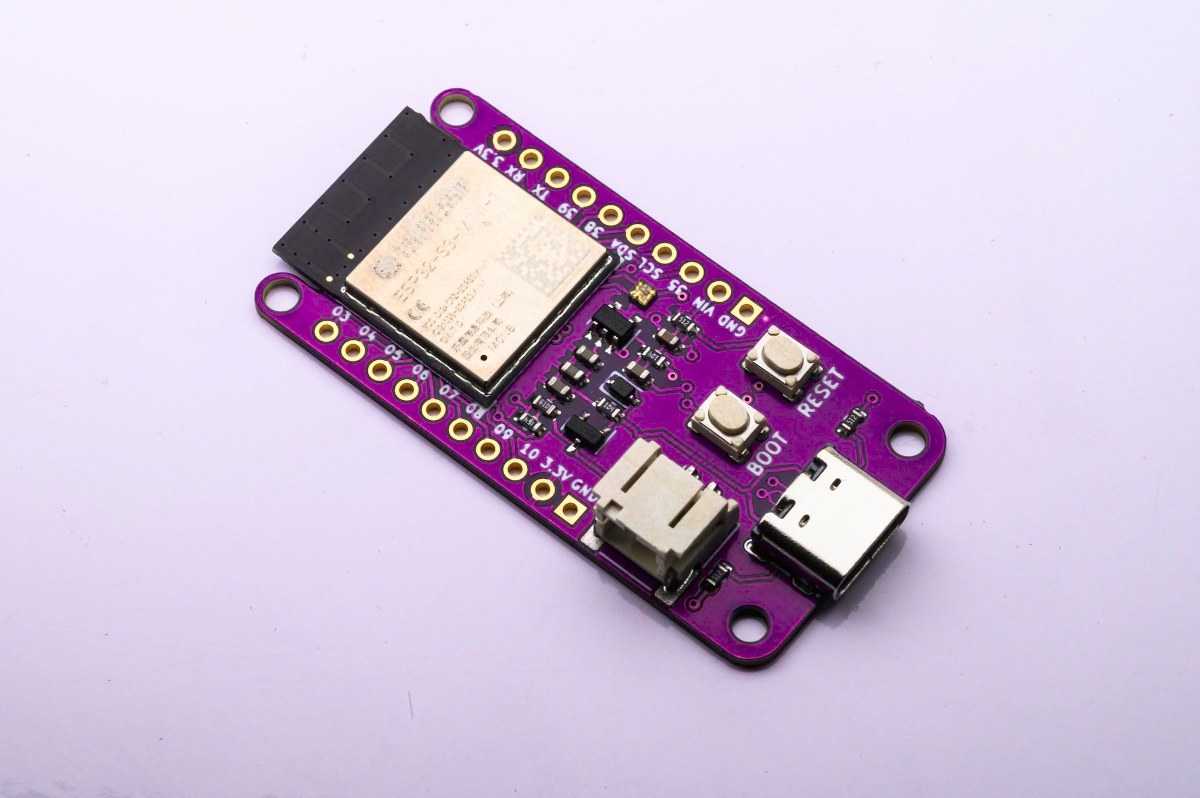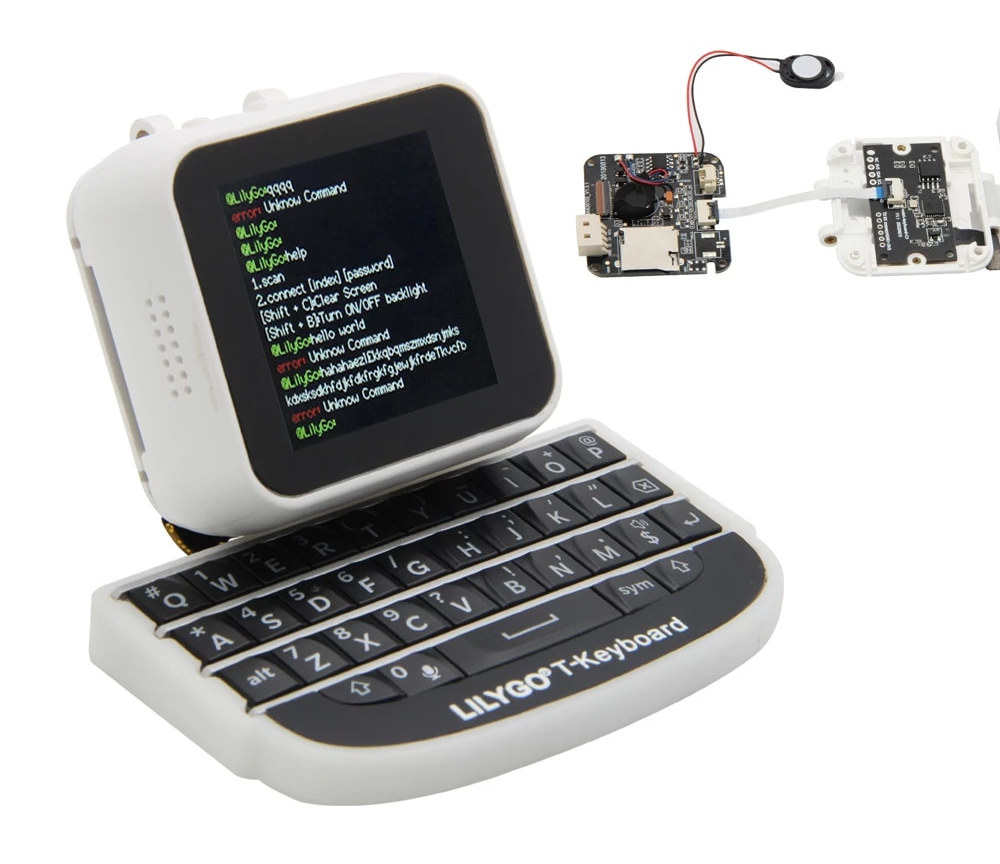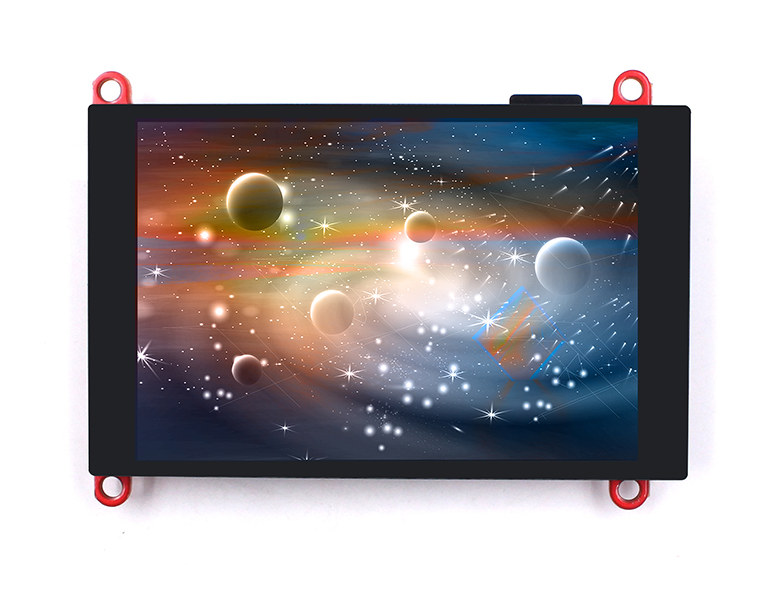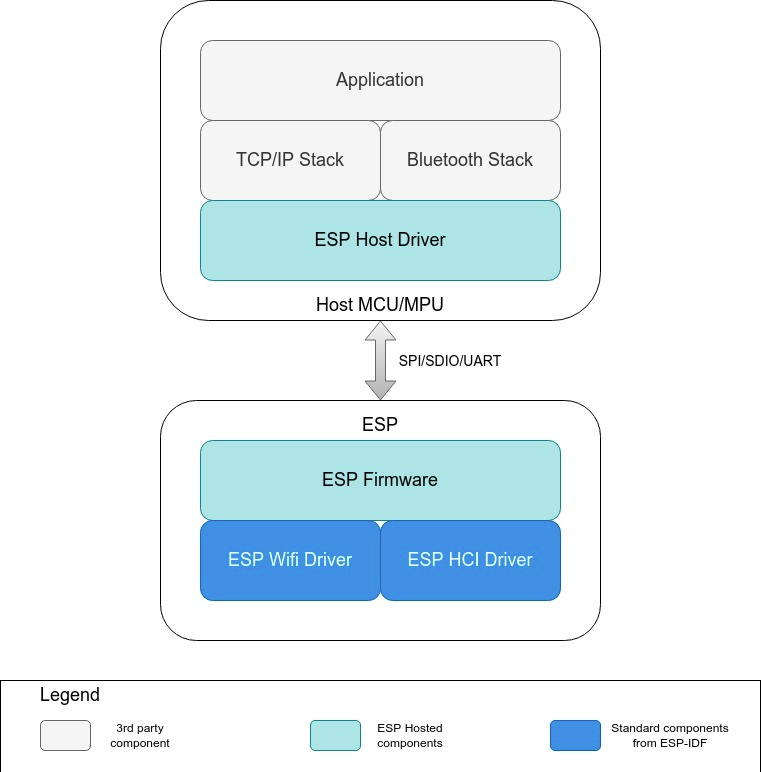AI Thinker has just introduced a new family of wireless IoT modules with the Ai-WB2 equipped with Bouffalo Lab BL602 RISC-V microcontroller offering both 2.4 GHz WiFi 4 and Bluetooth 5.0 LE connectivity. There are ten different modules to choose from, probably to keep mechanical and electrical compatibility with ESP8266 and ESP32 modules, and the company expects customers to integrate those into Internet of Things (IoT) products, mobile devices, wearables, Smart Home appliances, and more. Ai-WB2 modules share the following specifications: Wireless MCU – Bouffalo Lab BL602 32-bit RISC-V microcontroller @ up to 192 MHz with 276KB SRAM, 2.4 GHz WiFi 4 and Bluetooth 5.0 LE connectivity Storage – 2MB or 4MB SPI flash WiFi range – Up to about 500 meters (typical) I/Os – SDIO, SPI, UART, I2C, IR receiver, PWM, ADC, DAC, and GPIO (except Ai-WB2-01S with just UART/PWM/GPIO/ADC) Power Supply – 2.7V to 3.6V > 500mA Power […]
T-Embed is a battery powered WiFi controller with display and rotary encoder
LilyGo has launched yet another product based on the ESP32 family of microcontrollers with the T-Embed WiFi IoT controller powered by an ESP32-S3 dual-core processor, equipped with a color display and a rotary encoder, and powered by a battery. The device is programmable and can be used to control Smart Home and IoT devices connected over WiFi or Bluetooth. It also integrates a microphone and speaker, a microSD card for data logging, as well as a Grove connector and an 8-pin GPIO header for expansion. T-Embed specifications: Wireless module – ESP32-S3-WROOM-1 module with an ESP32-S3 dual-core Xtensa LX7 processor with WiFi 4 and Bluetooth 5.0 connectivity, 4 to 16MB QSPI flash, up to 8MB PSRAM, PCB antenna; (Note it’s unclear which exact version is used) Storage – MicroSD card socket Display – 1.9-inch IPS color TFT LCD with 320 x 170 resolution (ST7789 driver), 350 Cd/m2 brightness Audio – 2x […]
ESP32 DevKitC V4 IoT development board ships with ESP32-WROOM-DA dual antenna module
The ESP32 DevKitC V4 is now selling with the ESP32-WROOM-DA module with two PCB antennas that was introduced last year in order to offer a longer WiFi range and better reliability. The development kit is exactly the same as the other ESP32 DevKitC V4 models, and the only difference is the dual antenna design. When running a recent version of the Arduino Core for the ESP32 (2.0.3 or greater), the ESP32 will automatically switch to the antenna with the strongest signal in order to deliver the best connectivity possible. ESP32 DevKitC V4 specifications: Wireless module – ESP32-WROOM-DA (PDF datasheet) with SoC – Espressif Systems ESP32-D0WD-V3 dual-core LX6 microprocessor with 520 KB SRAM, 2.4 GHz WiFi 4 and Bluetooth 4.1 connectivity Storage – 4MB SPI flash Two PCB antennas (ANT1 and ANT2) USB – 1x Micro USB port for power, programming, and debugging through USB-to-UART bridge up to 3 Mbps Expansion […]
$5.5 Banana Pi BPI-PicoW-S3 ESP32-S3 board follows Raspberry Pi Pico W form factor
Banana Pi’s BPI-PicoW-S3 is a development board following the Raspberry Pi Pico W form factor, but based on Espressif System ESP32-S3 dual-core microcontroller offering both WiFi 4 and Bluetooth LE connectivity. The Raspberry Pi SBCs have inspired many designs, but the Raspberry Pi Pico MCU boards less so. So far, I had only seen the WeAct RP2040 board with the same layout except for a USB Type-C port and a 16MB flash. But the Banana Pi BPI-PicoW-S3 provides a direct alternative to the Raspberry Pi Pico W with a more powerful microcontroller, vector instructions for AI acceleration, BLE, and about the same price at $5.5 plus shipping. Let’s see how the BPI-PicoW-S3 specifications compare to the ones of the Raspberry Pi Pico W in the table below. While the power signal (5V, 3.3V, GND) and GPIO numbers are the same on both boards, there are a few variations here and […]
Bee S3 ultra-low-power ESP32-S3 board can last several years on a LiPo battery
Smart Bee Designs’ Bee S3 is an ultra-low-power development board based on Espressif ESP32-S3 WiFi & Bluetooth microcontroller that consumes less than 20 uA in deep sleep mode allowing the board to theoretically last over 5 years under specific conditions. The board provides WiFi 4 and Bluetooth 5 LE connectivity, features a battery voltage monitoring circuitry to check the battery charge level, a USB Type-C port for power and programming, plus 20 through holes for extensions such as connecting sensors, and so on. Bee S3 specifications: Wireless module – Espressif Systems ESP32-S3-MINI-1 module (PDF datasheet) with ESP32-S3 dual-core Xtensa LX7 processor with WiFi 4 and Bluetooth 5.0 connectivity, 4MB or 8MB QSPI flash, PCB antenna USB – 1x USB Type-C port for power and programming Expansion – 2x 10-pin headers with up to 15x GPIO, 8x ADC, touch support, I2C, SPI, UART, 5V In/out, 3.3V out, and GND Misc – […]
T-Watch-Keyboard-C3 with ESP32 “watch”, ESP32-C3 keyboard looks like a miniature PC replica
T-Watch-Keyboard-C3 is a device that looks like a miniature PC replica comprised of an ESP32-C3 powered keyboard, and the TTGO T-Watch ESP32 programmable device with a 1.54-inch touchscreen display. The LilyGo TTGO T-Watch ESP32 programmable touchscreen display has been around for a while, and the company used to provide an accessory keyboard based on Microchip ATSAM20 Cortex-M0+ microcontroller that has now been replaced with ESP32-C3 WiFi and Bluetooth RISC-V microcontroller to create the T-Watch-Keyboard-C3 devices pictured below. T-Watch-Keyboard-C3 specifications: TTGO T-Watch MCU – ESP32-D0WDQ6 dual-core microcontroller @ 240 MHz with WiFi 4 and Bluetooth 4.x with 520KB SRAM Memory – 8MB PSRAM Storage – 16MB QSPI flash Display – 1.54-inch LCD screen USB – 1x USB Type-C port for power and programming via CP2104 USB to TTL chip Sensor – 3-axis accelerometer Misc – Power button, RTC Dimensions – 40 x 38 x 20 mm Weight – 43.19 grams […]
Makerfabs 3.5-inch TFT touchscreen display features ESP32-S3 SoC
Makerfabs has launched a 3.5-inch TFT touchscreen display with built-in WiFi and Bluetooth connectivity through an ESP32-S3 dual-core Tensilica LX7 microcontroller clocked at 240 MHz with vector instructions for AI acceleration. This display offers a 320×480 resolution through the ILI9488 LCD driver, uses a 16-bit parallel interface for communication with ESP32-S3 clocked at up to 20 Mhz making it suitable for smooth graphics user interface, and the company also claims it is smooth enough for video displays, but more on that later. Specifications: Wireless module – ESP32-S3-WROOM-1-N16R2 with Espressif Systems ESP32-S3 dual-core Tensilica LX7 @ up to 240 MHz with vector instructions for AI acceleration, 512KB RAM, 2.4 GHz WiFi 4 and Bluetooth 5.0 LE with support for long-range, up to 2Mbps data rate, mesh networking 16MB QSPI flash 2MB PSRAM PCB antenna Storage – MicroSD card socket Display – 3.5-inch color TFT LCD with 480×320 resolution, 16-bit parallel interface […]
ESP-Hosted simplifies adding WiFi connectivity to legacy Linux or MCU-based products
Most of the ESP8266 and ESP32 projects and products we cover here use the Espressif microcontroller as the main chip, but ESP8266 started as a WiFi module meant to be controlled with AT commands from a host device. But there are still “legacy” products that may benefit from connecting to the cloud, and Espressif introduced the ESP-Hosted for that purpose in 2020, and recently released a next-generation ESP-Hosted solution (ESP-Hosted-NG) specifically for Linux hosts. The solution is available in two variants: ESP-Hosted-FG (First generation) exposing an Ethernet interface to the host and suitable for microcontrollers and Linux hosts, and the ESP-Hosted-NG presenting an 802.11 network interface and designed for Linux hosts only. Both solutions include ESP32 firmware and a host driver running on the legacy system. Espressif Systems recommends using ESP-Hosted-FG on an MCU host, and ESP-Hosted-NG on a Linux host in order to benefit from Linux user space applications/services […]


